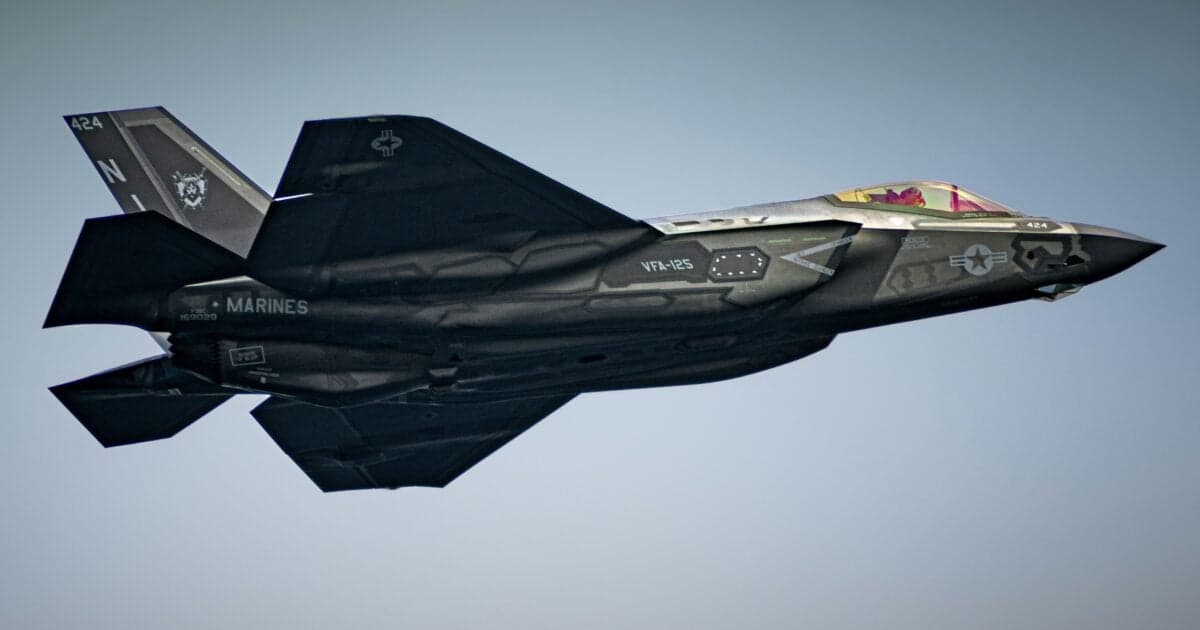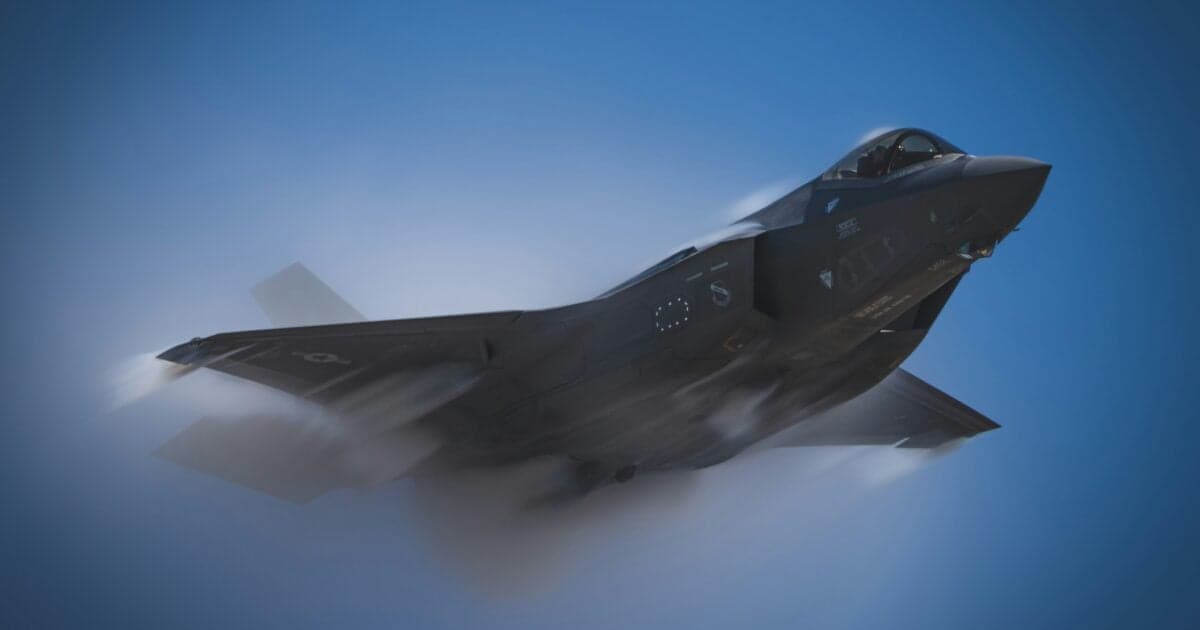The Case for Lockheed Martin (LMT) as a Long-Term Stock Buy


No one had ever been so happy to find a pile of dead bats.
Their leathery silhouettes littered the concrete floor, dark stains against the otherwise pristine hangar bay... But why were they here?
Stationed deep in a remote desert in Saudi Arabia, the engineers were accustomed to these types of bats. The winged beasts flew out every night to feast on insects. But this time, they had somehow found their way into the top-secret aircraft hangar. And once inside, their echolocation had betrayed them.
The bats died flying smack-dab into Lockheed Martin's (LMT) new stealth aircraft... the F-117 Nighthawk, parked in the center of the hangar.
It turns out the military contractor's latest and greatest stealth fighter was so covert, even bats couldn't detect its radar cross section.
This 1990 discovery was the first real proof that Lockheed's stealth technology was worth every penny of its $43 million price tag.
Ultimately, the U.S. government sank $2.5 billion into the F-117 Nighthawk program – most of which went to Lockheed. Lockheed and the jet delivered with an impressive 80% mission success rate on nearly 1,300 deployments during the first Gulf War.
In the decades that followed, the company's aircraft have become household names.
Today, as global tensions escalate across Eastern Europe, Asia, and the Middle East, defense stocks are back in the spotlight...
New hostilities have erupted between Israel and Iran. And most recently, at a summit last week, NATO made a landmark agreement to raise military spending. Most European countries said their defense spending would rise to 5% of national income over the next 10 years.
So, if you're an investor, you might be looking for the best war stocks to buy during these uncertain times. And Lockheed Martin consistently rises to the top of the list.
From iconic stealth aircraft to cutting-edge missile systems, Lockheed has not only shaped modern warfare... It has also built a fortress of profitability, thanks to its unrivaled relationship with the U.S. government.
And in a world where geopolitical risk is rising, Lockheed stands as one of the most reliable military stocks to buy.
Let's take a look at the reasons why – starting with Lockheed's most important relationship...
A Defense Stock Backed by the U.S. Government
If you're looking for a defense stock with reliability, scale, and long-term visibility, Lockheed Martin stands out as one of the most attractive investments in the industry – and for good reason.
Roughly 93% of Lockheed's annual revenue comes directly from government contracts. About 73% of that is from the U.S. government alone.
That's one of the most reliable revenue streams you can get.
Like many other defense contractors, Lockheed operates under a "cost-plus" model. Basically, the government reimburses the company for project expenses and then pays an additional guaranteed profit on top.
This makes defense one of the few industries in the world with near-guaranteed margins. Economic uncertainty doesn't slow it down... And times of war only make it stronger.
Lockheed isn't the only defense contractor to benefit from a "win-win" business model... But it has set itself apart.
The company generated $71 billion in revenue last year alone. And over the last five years, Lockheed has averaged a 9% net profit margin, which is excellent in the world of aerospace and defense.
Lockheed's government-backed contracts span across four core divisions:
- Aeronautics (fighter jets)
- Rotary & Mission Systems (helicopters, radar)
- Missiles & Fire Control (weapons systems)
- Space (satellites, missile defense)
Aeronautics is the crown jewel, accounting for nearly 40% of total revenue. And with countries worldwide ramping up their defense budgets, each of these business lines is positioned for continued growth.
Lockheed Martin continues to lock in major government deals...
In late March 2025, the company secured a nearly $5 billion contract from the U.S. Army to produce its next-generation Precision Strike Missile. These missiles are designed to replace the Army's current stash of older tactical missiles.
This deal comes with flexible "indefinite delivery, indefinite quantity" terms. So there's no set number of missiles or delivery schedule, which means Lockheed can rapidly scale production and deliver advanced firepower as needed.
And earlier in the year, Lockheed's Syracuse, New York plant won one of its largest contracts ever. This submarine-based systems deal is valued between $1 billion to $1.3 billion.
Lockheed delivers mission-critical hardware, through consistent, high-value agreements with the U.S. government. All together, these contracts highlight why Lockheed is a top U.S. defense contractor.
How LMT Compares With Other Defense Stocks (Like NOC)
Lockheed's top competitors include Northrop Grumman (NOC) and RTX (formerly Raytheon Technologies).
All three defense contractors benefit from rising military spending. And they each have their own strengths. RTX, for instance, is a uniquely diversified defense contractor (as my colleague John Robertson recently shared).
However, Lockheed leads the pack in both scale and capital efficiency.
First, it makes up a huge chunk of the market...
The financials are in Lockheed's favor too. Its margins are in great shape compared with its top rivals.
It's worth noting that like most defense companies, Lockheed spends a colossal amount on capital expenditures ("capex").
Last year, Lockheed spent $1.7 billion on capex. That's right about in line with what Northrop spent, at about $1.8 billion, and much lower than what RTX spent, at roughly $3.5 billion.
After subtracting Lockheed's capex from its OCF, the company was left with nearly $5.3 billion in free cash flow ("FCF").
That gives Lockheed an FCF margin of 7.4%, ahead of the defense industry's 6.7% average.
Here's how the numbers stack up...
While all three of these companies are solid defense stocks to buy, Lockheed has superior margins, scale, and cash discipline.
Why LMT Deserves a Spot in Your Portfolio
If you've been scanning headlines for "best war stocks" or "defense stocks to buy," there's a reason Lockheed Martin keeps appearing at the top of the list.
The company ranks in the top 3% of all U.S. stocks tracked by the Stansberry Score, thanks to its strong financials, capital efficiency, and dependable cash flows.
Our proprietary Stansberry Score goes beyond "bullish" or "bearish" ratings. The score is based on four main factors... capital efficiency (the hallmark of Stansberry Research), financial, valuation, and momentum – with momentum being the smallest factor.
Each stock gets a score, ranging from 0 to 100. Anything above 80 is considered a fantastic opportunity.
Today, Lockheed gets a Stansberry Score of 84, with A grades for financials, capital efficiency, and valuation. Take a look...
Lockheed has consistently rewarded its shareholders. It repurchased $9.7 billion worth of stock over the past two years alone. In addition to buybacks, the company has raised its dividend every year since 2003, earning the coveted title of a "Dividend Achiever."
Lockheed also remains reasonably valued, trading at 19 times earnings and 21 times FCF. That's a discount to the broader S&P 500 Index, which trades at 25 times earnings and 26 times FCF.
Last year, Lockheed produced $5.3 billion in FCF... a critical metric for long-term investors seeking financial stability. Unlike earnings, FCF is difficult for companies to manipulate in their favor. That's why we call it "the number that doesn't lie."
In short, Lockheed is a top performer. Given its many strengths and its reasonable valuation, you're getting good bang for your buck.
The Future of War Stocks
Still, you might be wondering what happens to this stock if uncertainty eases.
It's a valid question for investors. My colleague Dan Ferris recently warned investors not to try to predict wars...
When folks ask how to "play" these wars, the only real answer is... don't. If you try it, you're just gambling.
We recommend buying great businesses for the long term. The latest news about tariffs, trade wars, and bombs in Iran hasn't changed that.
Thankfully for investors, Lockheed Martin is a great business for the long term. It generates steady revenues, which slowly climb higher year after year. And you can see its consistent strength in the numbers we shared above.
Meanwhile, if global unrest continues to influence the market environment, Lockheed will also benefit from rising geopolitical uncertainty. Unlike most of the market, unpredictability only puts this stock in a better position.
Investing in war stocks is never a feel-good story – but it's often a profitable one. And among the top defense stocks to buy, Lockheed Martin stands alone.
With Eastern Europe on edge, Middle East tensions escalating, and defense spending ramping up around the world, Lockheed could see a wave of multiyear contracts unlike anything in its history...
Its unmatched relationship with the U.S. government, its history of innovation, and its stable business model makes it a fortress in volatile times.
So, if you're looking for exposure to defense contractor stocks, Lockheed Martin may be your strongest, most battle-tested pick.
Good investing,
Tyler Jarman






